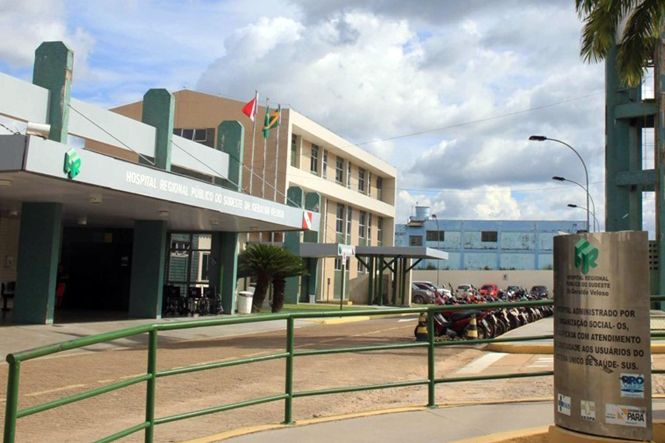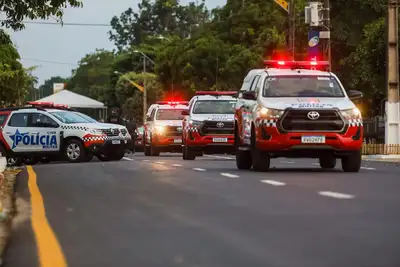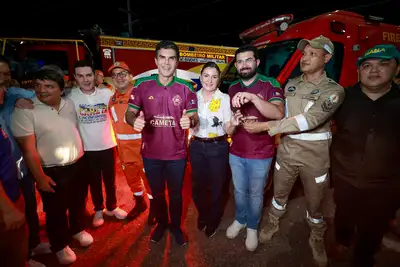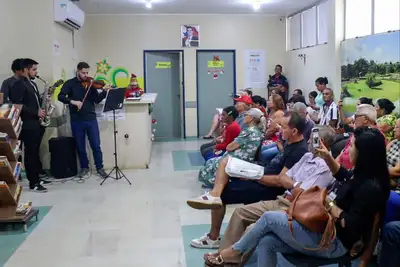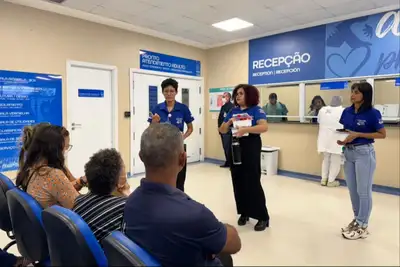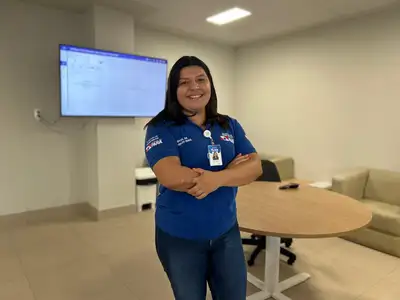With educational project, hospital in Marabá promotes healthy eating for children
Hospital in Southeast Pará helps prevent issues such as childhood obesity, hypertension, among other diseases associated with poor nutrition
At the Regional Hospital of Southeast Pará, Dr. Geraldo Veloso (HRSP), in Marabá, children's meals are planned to contribute to recovery and health promotion. The care is reinforced in the unit with the "Food Traffic Light" project, which offers nutritional guidance in a playful and educational way.
The initiative promoted by the Humanization and Dietary Nutrition services travels through the hospitalization units and corridors, with games, posters, and interactive activities, guiding young patients to recognize healthy foods, those that should be consumed in moderation, and those that require more care, all based on the colors of the traffic light.
Pedro Silva, 11 years old, a resident of Marabá in the Carajás region, participated in the activity while waiting for an appointment with a pediatric surgeon. "At home, we eat a lot of fruits and vegetables. I already knew they were good for us, but now I understand better why," he said.
Colorful, simple, and effective, the project classifies foods into three colors: green (allowed), yellow (moderation), and red (avoid). The idea is for children to practically understand what they should or should not put on their plates and take the learning home to their families.
Maria Eduarda, 8 years old, from Curionópolis, also in the Carajás region, referred for care with the pediatric surgeon, was excited about the action. "I learned that fruits and vegetables are very good for us and that sweets shouldn't be every day. Now I will ask my mom for more fruits," she said, with a big smile on her face.
According to the World Health Organization (WHO), more than 340 million children face overweight or obesity worldwide. In Brazil, about 15% of children aged 5 to 9 are overweight, a reality that requires urgent action and effective awareness strategies.
Guidance
At the Regional Hospital of Marabá, managed by the Institute of Social and Environmental Health of the Amazon (ISSAA) and the State Department of Public Health (Sespa), educational actions like the "Food Traffic Light" are part of the comprehensive care routine offered to users.
Nutritionist Elizangela Carvalho, one of those responsible for the activities, explains the project. "When we associate foods with the colors of the traffic light, we facilitate understanding. Fruits, vegetables, and greens are 'green', nutritious, and always welcome. Foods like white rice, cheeses, and natural juices are 'yellow', needing balance. And the 'red' foods, like snacks, sodas, and sweets, should be avoided because they increase the risk of obesity and chronic diseases," highlighted the nutritionist.
Elizangela emphasizes that the active participation of children in the activities is essential for learning to become a habit, and thus, prevention starts early. "When they understand the importance of making good food choices, they develop autonomy and food awareness," she stated.
Adopting healthy habits from childhood is essential to avoid problems such as childhood obesity, type 2 diabetes, hypertension, and other diseases associated with poor nutrition. The "Food Traffic Light" is, therefore, more than an educational activity; it is an important step towards forming healthier adults in the future.
Humanization analyst Daiane Uszynski emphasizes that actions like this are regularly carried out in the unit. "We use a language that resonates with the children's universe, so that knowledge doesn't stay only in the hospital but also reaches family tables. The children become multipliers. We also carry out bedside actions to stimulate hospitalized children and those who come to the hospital for consultations and exams," she emphasized.
Check the classification of foods, like a traffic light, guiding children and their families to make healthier choices:
Green - Allowed Foods: Fruits, vegetables, and greens should be consumed frequently, as they are rich in vitamins, fibers, and minerals that help in growth and strengthening the body;
Yellow - Foods in Moderation: Foods like white rice, refined breads, and cheeses should be consumed in balance, as they are less nutritious and, in excess, can contribute to weight gain;
Red – Foods to Avoid: Snacks, sodas, and sweets are high in sugar and fat, increasing the risk of obesity and chronic diseases. Excessive consumption can harm health in the long term.
Profile: As a reference in medium and high complexity, the Regional Hospital of Southeast Pará has 135 beds, including 38 ICU beds, and provides 100% free care through the Unified Health System (SUS).
With initiatives like the "Food Traffic Light", the hospital reaffirms its commitment to immediate care and also to the formation of healthy habits that can transform the future of the next generations for the better.


